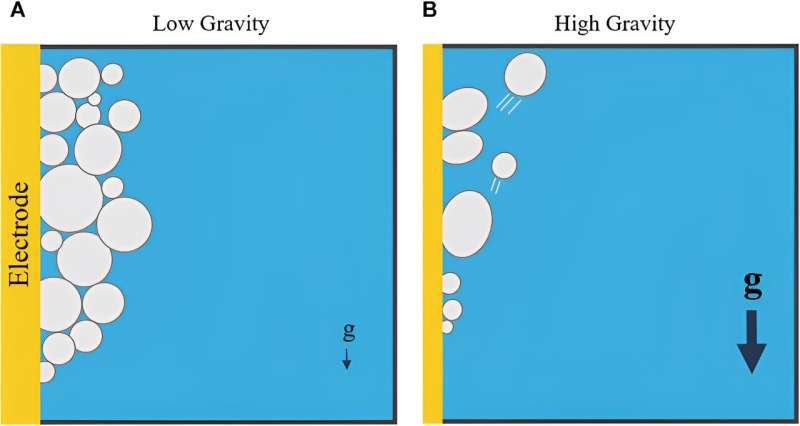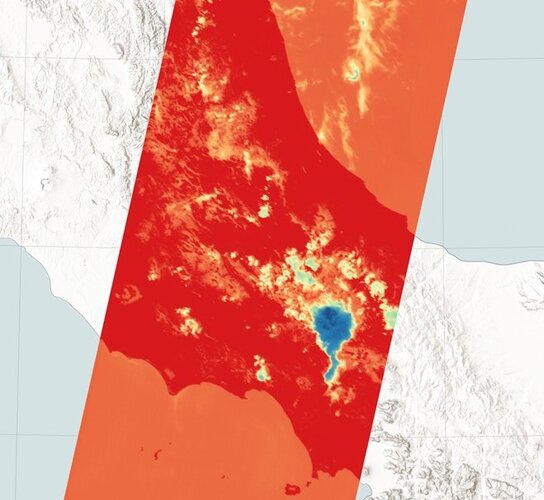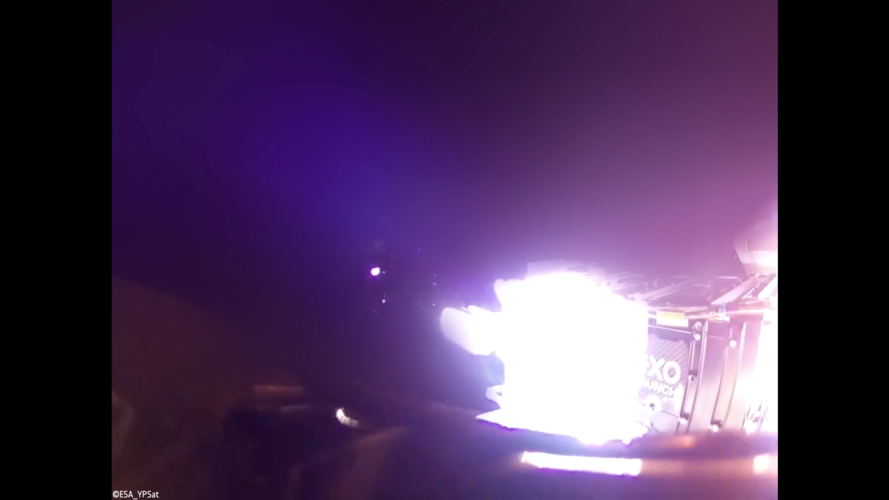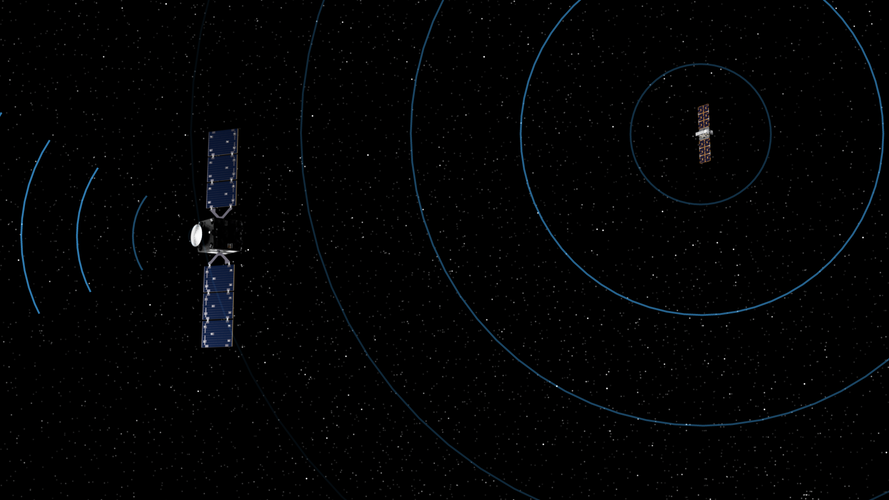Producing oxygen from rock is harder in lower gravity, modeling study shows
Wednesday, 24 July 2024 16:38
One of the challenges engineers face when developing technologies for use in space is that of different gravities. Mostly, engineers only have access to test beds that reflect either Earth's normal gravity or, if they're fortunate, the microgravity of the ISS. Designing and testing systems for the reduced, but not negligible, gravity on the moon and Mars is much more difficult. But for some systems, it is essential.
One such system is electrolysis, the process by which explorers will make oxygen for astronauts to breathe on a permanent moon or Mars base, as well as critical ingredients like hydrogen for rocket fuel. To help steer the development of systems that will work in those conditions, a team of researchers led by computational physicist Dr.
Webb images new, cold exoplanet 12 light-years away
Wednesday, 24 July 2024 14:00
An international team of astronomers using the NASA/ESA/CSA James Webb Space Telescope have directly imaged an exoplanet roughly 12 light-years from Earth. While there were hints that the planet existed, it had not been confirmed until Webb imaged it. The planet is one of the coldest exoplanets observed to date.
Star Catcher banks $12.25 million for orbital energy grid
Wednesday, 24 July 2024 12:00

EarthCARE’s multispectral imager puts clouds into context
Wednesday, 24 July 2024 08:36
Launched less than two months ago, ESA’s EarthCARE satellite has already returned images from two of its four instruments. Now, it has also delivered the first images from its multispectral imager, showcasing various types of clouds and cloud temperatures worldwide. This instrument is set to add valuable context to the data from EarthCARE’s other instruments.
YPSat witnesses ISTSat-1 & 3Cat-4 CubeSats deployment from Ariane 6
Wednesday, 24 July 2024 08:00 Video:
00:00:15
Video:
00:00:15
Video returned from the ESA Young Professionals Satellite payload, YPSat, attached to the upper stage of the inaugural Ariane 6 rocket, launched on 9 July 2024. This clip shows two cubesats deployment into orbit from the Exolaunch dispenser: The first CubeSat is ISTSat-1 and the second is 3Cat-4, both supported by ESA Education initiatives. The video has been enhanced to highlight these events, that were part of the key mission objectives for YPSat. The YPSat project represents the culmination of about two and a half years of dedication and hard work core team of about 30 Young
Hera spacecraft trio to fly safe with inter-linked radio
Wednesday, 24 July 2024 06:55
ESA’s Hera mission for planetary defence involves not just one spacecraft but three: two shoebox-sized CubeSats will fly up to a few dozen kilometres away from their mothership around the Didymos binary asteroid system. Keeping this trio in communication to fulfil their own mission needs while also ensuring their safe separation is the task of a novel inter-satellite link radio technology, produced by a Portuguese company best known for terrestrial drone systems.
Review concludes proposed NASA budget cuts would end Chandra
Wednesday, 24 July 2024 04:12

Astroscale UK Wins Contract for Final Phase of ELSA-M Demonstration
Tuesday, 23 July 2024 22:46 Astroscale Ltd ("Astroscale UK"), a subsidiary of Astroscale Holdings Inc. ("Astroscale"), has secured EUR 13.95 million (approximately USD 15 million or GBP 11.78 million) from the UK Space Agency and the European Space Agency ("ESA") for the final phase of the End-of-Life by Astroscale-Multiple (ELSA-M) in-orbit demonstration.
The funding follows a contract with Eutelsat OneWeb as part o
Astroscale Ltd ("Astroscale UK"), a subsidiary of Astroscale Holdings Inc. ("Astroscale"), has secured EUR 13.95 million (approximately USD 15 million or GBP 11.78 million) from the UK Space Agency and the European Space Agency ("ESA") for the final phase of the End-of-Life by Astroscale-Multiple (ELSA-M) in-orbit demonstration.
The funding follows a contract with Eutelsat OneWeb as part o New Insight into Supermassive Black Hole Mergers and Dark Matter
Tuesday, 23 July 2024 22:46 Researchers have identified a crucial link between supermassive black holes (SMBHs) and dark matter particles, shedding light on the "final parsec problem" in astrophysics.
New calculations suggest that the merger of SMBH pairs into a single entity is facilitated by the previously underestimated behavior of dark matter particles. This discovery offers a potential solution to the "final par
Researchers have identified a crucial link between supermassive black holes (SMBHs) and dark matter particles, shedding light on the "final parsec problem" in astrophysics.
New calculations suggest that the merger of SMBH pairs into a single entity is facilitated by the previously underestimated behavior of dark matter particles. This discovery offers a potential solution to the "final par Quantum Particles Energy Landscape Theory Unveiled by Physicists
Tuesday, 23 July 2024 22:46 An international team of physicists, based at Trinity College Dublin, has formulated new theorems in quantum mechanics that define the "energy landscapes" of quantum particle collections. This work addresses long-standing questions, paving the way for more accurate computer simulations of materials, which could aid in developing new green technologies.
The theorems, recently published in t
An international team of physicists, based at Trinity College Dublin, has formulated new theorems in quantum mechanics that define the "energy landscapes" of quantum particle collections. This work addresses long-standing questions, paving the way for more accurate computer simulations of materials, which could aid in developing new green technologies.
The theorems, recently published in t 








